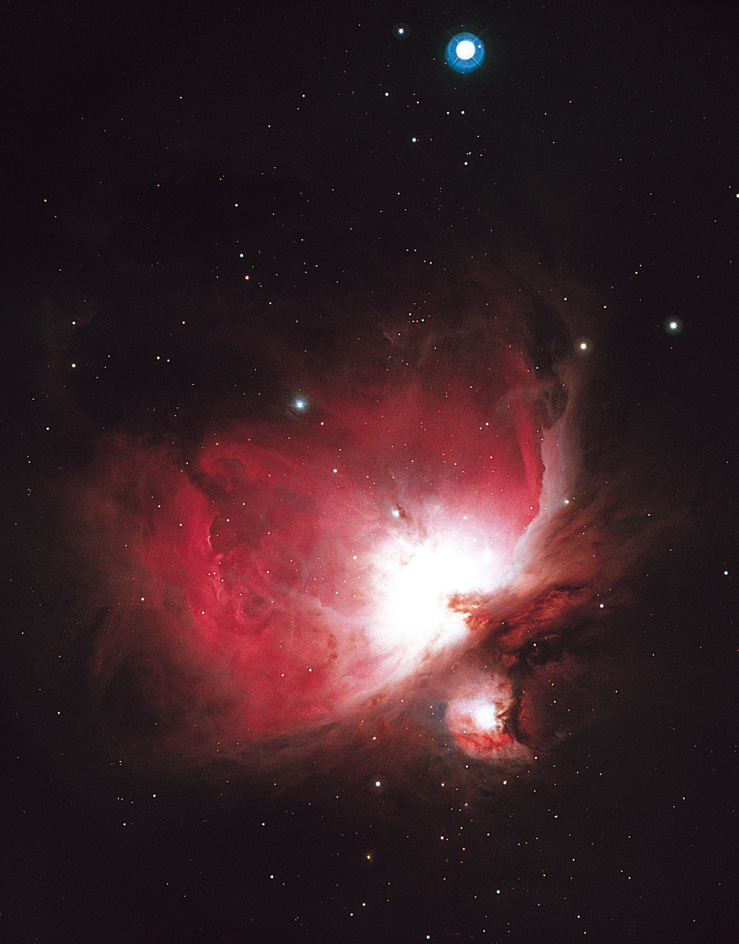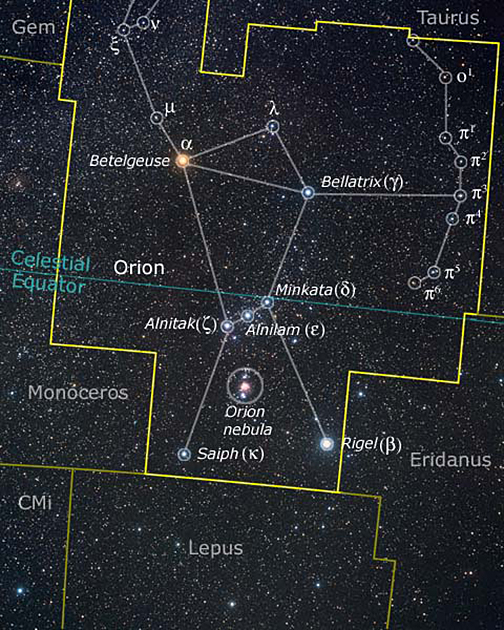Orion Nebula, sometimes called the Great Nebula in Orion , is a diffuse region of gas and dust in the constellation Orion, the Hunter. The nebula appears in the region known as Orion’s sword, which extends downward from the line of three stars that forms Orion’s belt. The Orion Nebula is designated M42 in the catalog of nonstellar objects created by the French astronomer Charles Messier in the late 1700’s. It is designated NGC 1976 in the New General Catalogue, a widely used work of astronomical reference. The Orion Nebula lies about 1,500 light-years from Earth. One light-year equals the distance light travels in a vacuum in a year, about 5.88 trillion miles (9.46 trillion kilometers).

Viewed through a small telescope or binoculars, the Orion Nebula appears to give off a diffuse white light. Long-exposure images or larger telescopes reveal a reddish glow. This red color comes from the radiation given off by excited hydrogen gas. The gas is excited by ultraviolet light from the brightest stars within the nebula. These stars—known collectively as the Trapezium Cluster—appear as one object to the unaided eye. With the use of a telescope or binoculars, however, they can be seen to be several stars.

The Orion Nebula is part of a giant molecular cloud that protects young stars forming inside of it. Without this cloud, harmful ultraviolet radiation from nearby fully formed stars would prevent the new stars from forming. Infrared and radio telescopes have peered through the shield to observe these new stars. Molecular clouds consist of dust and gas that is mostly made up of hydrogen molecules.
